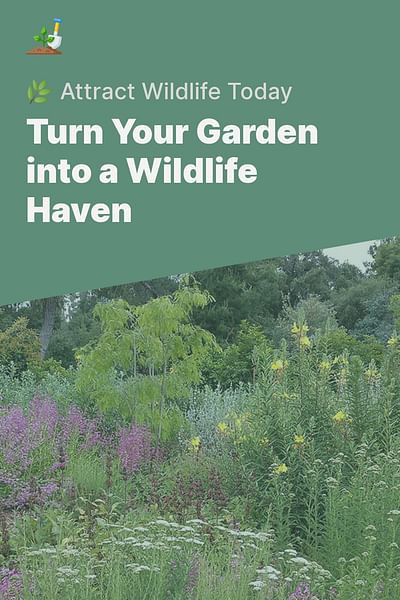Oliver Kim is a plant enthusiast and educator with a passion for teaching others about the wonders of the natural world. He has a background in botany and ecology and loves to share his knowledge with others. His focus is on creating gardens that showcase the beauty and diversity of plants.
Yes, I have! Creating a wildlife habitat in your garden is not only a rewarding experience, but it also plays a crucial role in supporting local ecosystems and promoting biodiversity. By attracting pollinators, birds, and other wildlife to your backyard, you can create a beautiful and sustainable garden that is teeming with life.
Why create a wildlife habitat in your garden?
Creating a wildlife habitat in your garden has numerous benefits. First and foremost, it provides a safe haven for local wildlife, allowing them to find food, shelter, and breeding grounds. This is especially important in urban areas where natural habitats are often scarce. By providing a habitat in your garden, you can help support and conserve local biodiversity.
How can I attract pollinators to my garden?
Attracting pollinators to your garden is essential for the health and productivity of your plants. To attract pollinators such as bees, butterflies, and hummingbirds, you can incorporate a variety of native plants into your garden. Native plants are well-adapted to the local environment and provide a reliable source of nectar and pollen. Additionally, avoid using pesticides and provide a water source, such as a shallow dish with pebbles, for pollinators to drink from.
What can I do to attract birds to my garden?
Birds are not only beautiful to watch, but they also play a vital role in controlling pests and spreading seeds. To attract birds to your garden, provide a variety of food sources such as bird feeders, native plants that produce berries or seeds, and water sources like birdbaths or small ponds. Creating different levels of vegetation, such as trees, shrubs, and ground cover, will also provide birds with nesting sites and shelter.
How can I create a wildlife pond in my garden?
Creating a wildlife pond in your garden is a fantastic way to attract a wide range of wildlife, including frogs, dragonflies, and even small mammals. Start by choosing a suitable location for your pond, ensuring it receives a mix of sunlight and shade throughout the day. Dig a hole and line it with a pond liner, making sure to create varying depths to accommodate different species. Add native aquatic plants and rocks around the edges to provide hiding places and perches for wildlife. Finally, fill the pond with rainwater or dechlorinated tap water and let nature take its course!
What other steps can I take to create a wildlife-friendly garden?
In addition to attracting pollinators, birds, and creating a wildlife pond, there are several other steps you can take to create a wildlife-friendly garden. Plant a diverse range of native plants to provide food and shelter for different species. Leave areas of your garden wild and untamed, allowing plants to grow naturally and providing habitat for insects and small mammals. Avoid using chemical pesticides and fertilizers, as they can harm wildlife and disrupt the natural balance of your garden. Finally, consider installing nesting boxes, bat boxes, and insect hotels to provide additional shelter for wildlife.
Creating a wildlife habitat in your garden is a wonderful way to connect with nature and make a positive impact on the environment. By attracting pollinators, birds, and other wildlife, you can create a thriving ecosystem right in your own backyard. So why not start today and transform your garden into a haven for wildlife?















